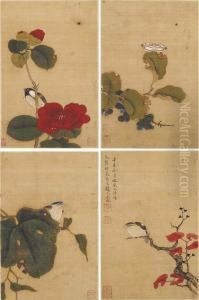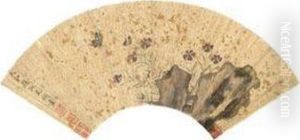Wen Shu Paintings
Wen Shu, also known as Wen Shu (文淑), was a Chinese female painter during the late Ming Dynasty, distinguishing herself in an era predominantly dominated by male artists. Born in 1595 into the Wen family in Jiangnan, a region known for its rich cultural heritage and significant contributions to Chinese literature and art, Wen Shu was part of a milieu that valued and nurtured artistic talents. Despite the societal constraints placed upon women in her time, Wen Shu managed to carve a niche for herself in the world of Chinese painting, an achievement that speaks volumes about her talent and determination.
Wen Shu was particularly renowned for her landscape and flower-and-bird paintings, genres that were highly esteemed in Chinese art. Her work is characterized by a delicate touch and a refined elegance, embodying the traditional Chinese aesthetic of harmony between humanity and nature. She was also known to infuse her paintings with poetic inscriptions, a practice that reflects the intertwined nature of painting, poetry, and calligraphy in Chinese culture. This multidisciplinary approach not only highlighted her versatility as an artist but also her deep immersion in the literary traditions of her time.
Her contributions to the art world during the Ming Dynasty were significant, not only because of her exceptional skills as a painter but also because she helped pave the way for future generations of female artists in China. By breaking through the gender barriers of her time, Wen Shu set a precedent for women in the arts, demonstrating that talent and passion could overcome societal limitations.
Despite her achievements, detailed records of Wen Shu's life are scarce, and much of what is known about her comes from the analysis of her surviving works and contemporary accounts that mention her. Her death in 1634 marked the end of a brief but impactful career, leaving behind a legacy that would inspire both women and men in the art world for centuries to come. Today, Wen Shu is remembered not only for her artistic contributions but also as a symbol of the resilience and potential of women in the face of societal challenges.

